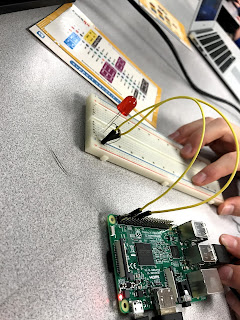2a. This program is written in python. Its purpose is to allow the user to create a shopping list. They can add items, remove items, and see the working list. When the user is finished, the list is saved. The video shows the program running in a terminal window. First, the name of the user is input, then the user can choose to see the list, add an item, remove an item, or quit the program. The user adds three items, removes an item, adds an item, looks at the list, then enters 'quit'. 2b. First I created a program that gave the user the information necessary to run the program - 1 shows the list, 2 adds to the list, 'quit' exits the program - and accepted input from the user. Then I added functions that perform the commands of 1 and 2. When the input was entered, the program performed the command. Additionally, a greeter function greeted the user at the beginning of the program, clearing the terminal window beforehand. Next, I added two functions to get the name of th...
